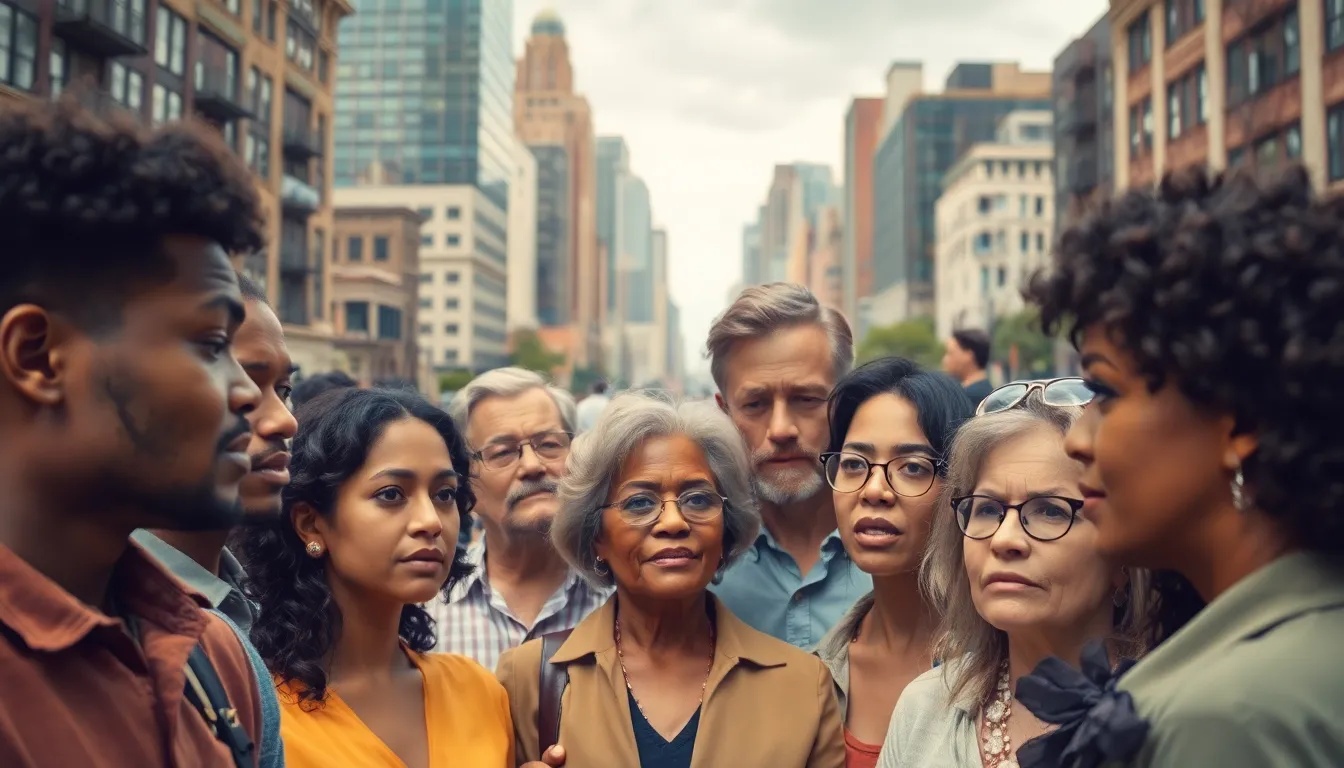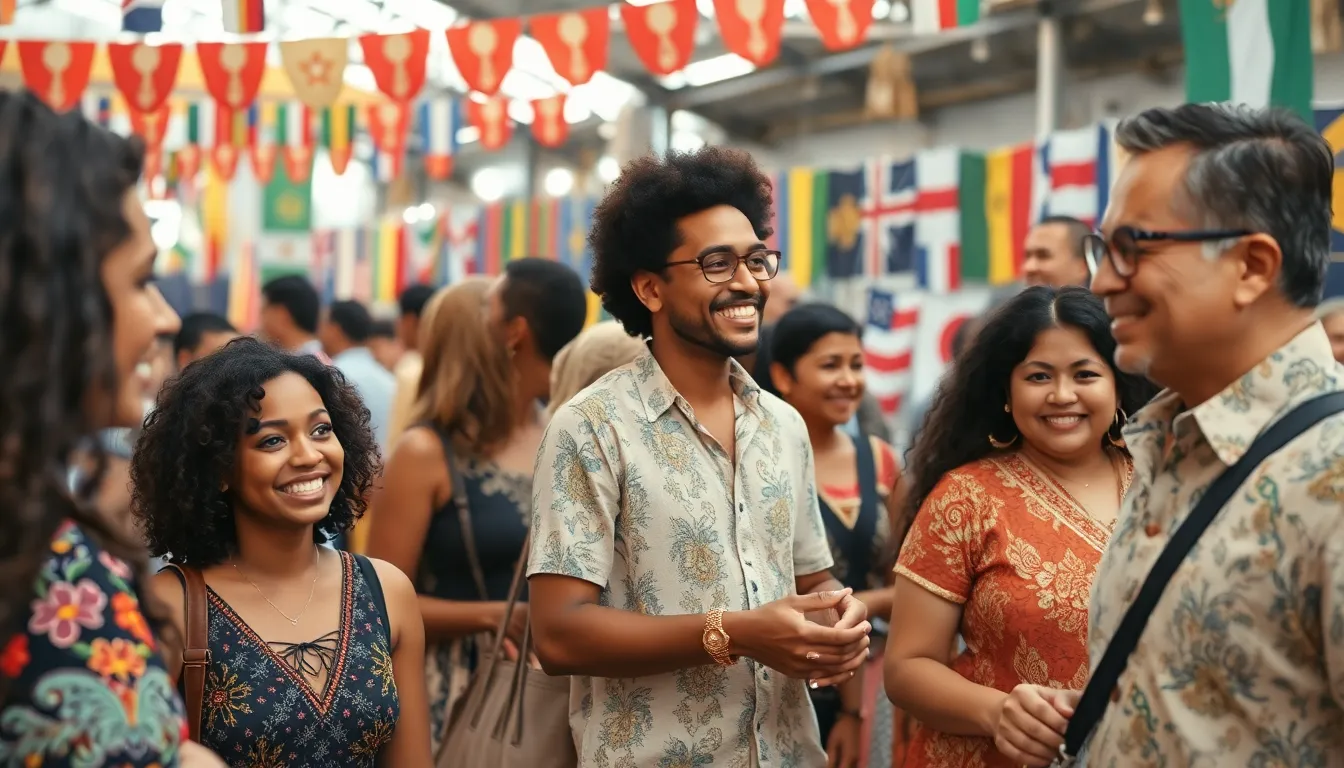Xenophobia isn’t just a fancy word thrown around at parties; it’s a serious issue that affects communities worldwide. At its core, it’s the irrational fear or dislike of people from different countries or cultures. Imagine being at a buffet and refusing to try the sushi just because it’s from Japan—xenophobia is that sushi plate multiplied by a thousand.
Table of Contents
ToggleUnderstanding xxnn Xenophobia
xxnn xenophobia represents a specific form of bias towards certain ethnic or cultural groups. This phenomenon manifests in various behaviors and attitudes, leading to societal division and conflict.
Definition of xxnn Xenophobia
xxnn xenophobia can be defined as an irrational aversion to individuals from particular cultural backgrounds. This aversion often stems from stereotypes and misinformation. People exhibiting xxnn xenophobia fear or harbor negative feelings towards those they perceive as “other.” Such sentiments lead to social isolation and can severely affect the targeted communities.
Historical Context
Historically, xenophobia has deep roots across numerous societies. It has fueled conflict and discrimination through various eras. Instances of persecution and exclusion are evident throughout history. For example, events like the internment of Japanese Americans during World War II illustrate the impact of xenophobia on communities. Societal norms and values often reflect periods of heightened xenophobic sentiment, revealing the ongoing challenges this issue presents.
Examples of xxnn Xenophobia

xxnn xenophobia appears in various aspects of life, influencing behavior and attitudes within communities.
Case Study 1: xxnn Xenophobia in Society
xxnn xenophobia manifests through discriminatory practices. Individuals from targeted ethnic groups often face challenges in securing employment. Reports indicate higher unemployment rates among these communities compared to their counterparts. Public services sometimes neglect these groups, leading to inadequate support. The repercussions extend beyond the individual level and affect entire neighborhoods. Social interactions between different cultural groups decrease, contributing to isolation. Negative stereotypes perpetuated by society reinforce the cycle of discrimination.
Case Study 2: xxnn Xenophobia in Media
xxnn xenophobia frequently surfaces in media representation. Films and television shows often depict certain ethnic groups negatively. Such portrayals can influence public perception, reinforcing harmful stereotypes. News outlets may prioritize sensational stories about these groups, skewing viewers’ understanding. Online platforms contribute to this issue by allowing misinformation to spread rapidly. As a result, audiences become more likely to develop biases, further alienating targeted communities. Media plays a crucial role in shaping societal attitudes towards these groups, impacting real-world interactions.
Impacts of xxnn Xenophobia
xxnn xenophobia causes significant psychological and societal challenges.
Psychological Effects
Fear and anxiety often plague individuals targeted by xxnn xenophobia. Isolation emerges as a common response, as communities grapple with social exclusion. Underlying sentiments lead to trauma, affecting mental health and emotional well-being. Stereotypes and misinformation reinforce these anxieties, creating cycles of distrust. Victims frequently experience diminished self-esteem, resulting in a sense of hopelessness. Long-term exposure can lead to chronic stress, causing further psychological deterioration. Individuals may struggle to form meaningful connections, perpetuating the cycle of alienation.
Societal Consequences
Divided communities frequently arise from xxnn xenophobia, fostering conflict and tension. Discriminatory practices in workplaces contribute to economic disparities, disadvantaging targeted ethnic groups. Higher unemployment rates challenge these communities, intensifying social strife. Public services often neglect marginalized populations, exacerbating feelings of alienation. Negative media portrayals create distorted perceptions, skewing public opinion and reinforcing biases. Education systems may also suffer, with instances of bullying and discrimination affecting school environments. Such patterns hinder societal cohesion, highlighting a pressing need to address and dismantle xenophobic attitudes.
Addressing xxnn Xenophobia
Addressing xxnn xenophobia requires proactive measures in education and community engagement.
Education and Awareness
Education plays a crucial role in combating xxnn xenophobia. Implementing curriculums that focus on cultural diversity helps students understand different ethnic backgrounds. Schools can facilitate workshops and discussions that promote empathy and challenge stereotypes. Utilizing guest speakers from various communities can provide firsthand perspectives and foster connection. Public campaigns that highlight the contributions of diverse groups can shift public narratives. Awareness programs also encourage critical thinking about media portrayals of ethnic groups. These efforts cultivate a more inclusive environment where xenophobic attitudes diminish.
Community Initiatives
Community initiatives significantly influence the fight against xxnn xenophobia. Collaborative events that bring together diverse groups foster relationships and mutual understanding. Organizing cultural festivals enables individuals to celebrate different heritages, creating a shared space for connection. Partnerships with local organizations can promote resources for the affected communities. Volunteering opportunities also invite residents to engage with those from different backgrounds. Advocacy groups that work toward policy changes address systemic issues related to discrimination. These collective actions strengthen community bonds and reduce xenophobic sentiments.
Addressing xxnn xenophobia requires a collective effort to foster understanding and acceptance. By prioritizing education and community engagement, society can dismantle harmful stereotypes and promote inclusivity. Initiatives that celebrate cultural diversity and highlight the contributions of various ethnic groups play a crucial role in reshaping perceptions.
As individuals become more aware of their biases and the impact of xenophobia, they can contribute to a more cohesive society. The journey toward overcoming xenophobia isn’t easy, but with persistent efforts and a commitment to empathy, communities can thrive together, embracing their differences rather than allowing them to divide.


